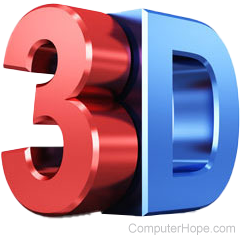OpenGL

Short for Open Graphics Library, OpenGL is a trademark of SGI (Silicon Graphics Inc.) is a cross-platform standard and API (application programming interface) for 2D and 3D rendering and 3D hardware acceleration. It was developed in 1992.
OpenGL comes in two varieties. The first is Microsoft OpenGL, which is often included in Windows or the installation software of a graphics card. The second is Cosmo OpenGL, which is designed for computer systems that don't have accelerated graphics card.
The interface consists of over 250 different function calls to draw complex three-dimensional scenes. It is widely used in CAD (computer-aided design), virtual reality, scientific and informational visualization, flight simulation, and video games.
OpenGL serves two main purposes:
- Hide complexities of interfacing with different 3D accelerators by presenting a single, uniform interface.
- Smooth over differing capabilities of hardware platforms by requiring support of the full OpenGL feature set for all implementations (using software emulation if necessary).
Today, OpenGL is managed by the non-profit technology consortium Khronos Group.
